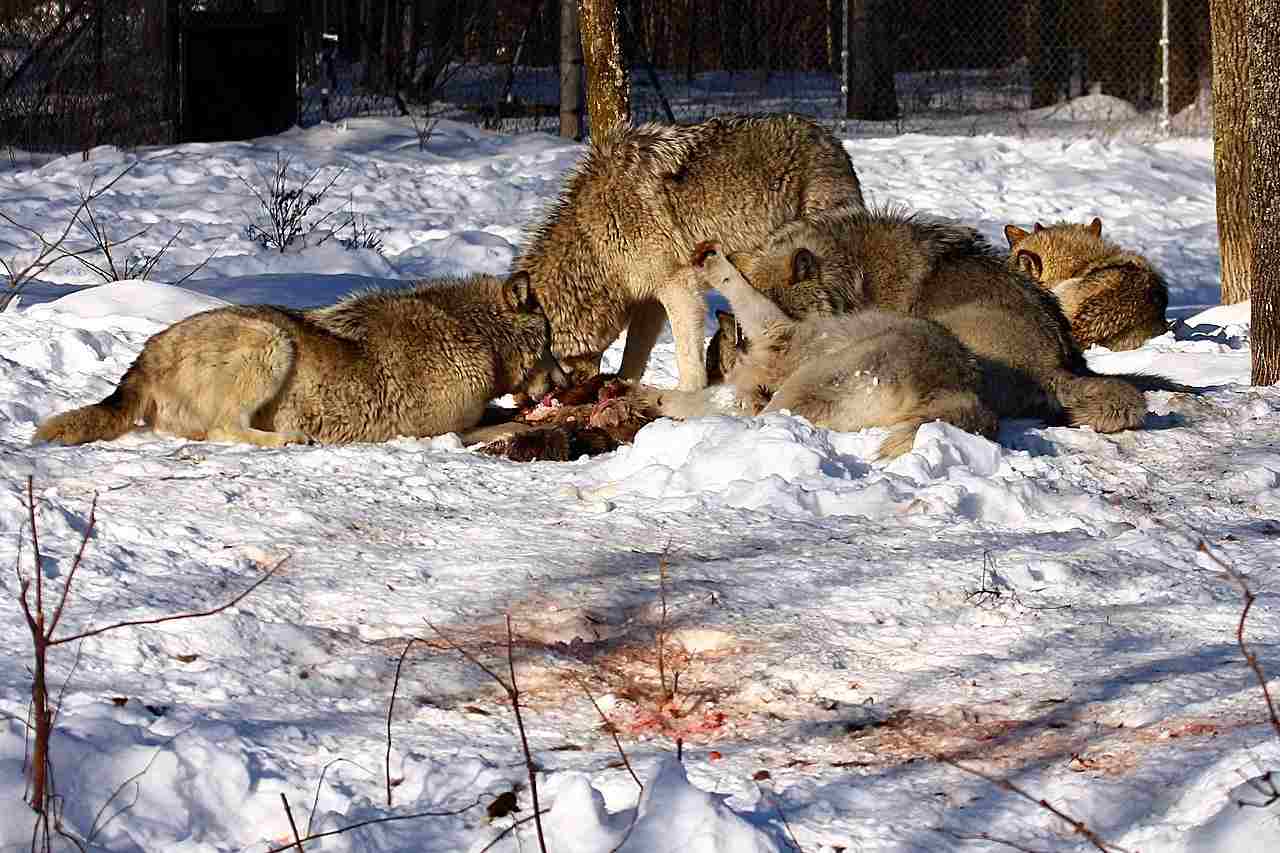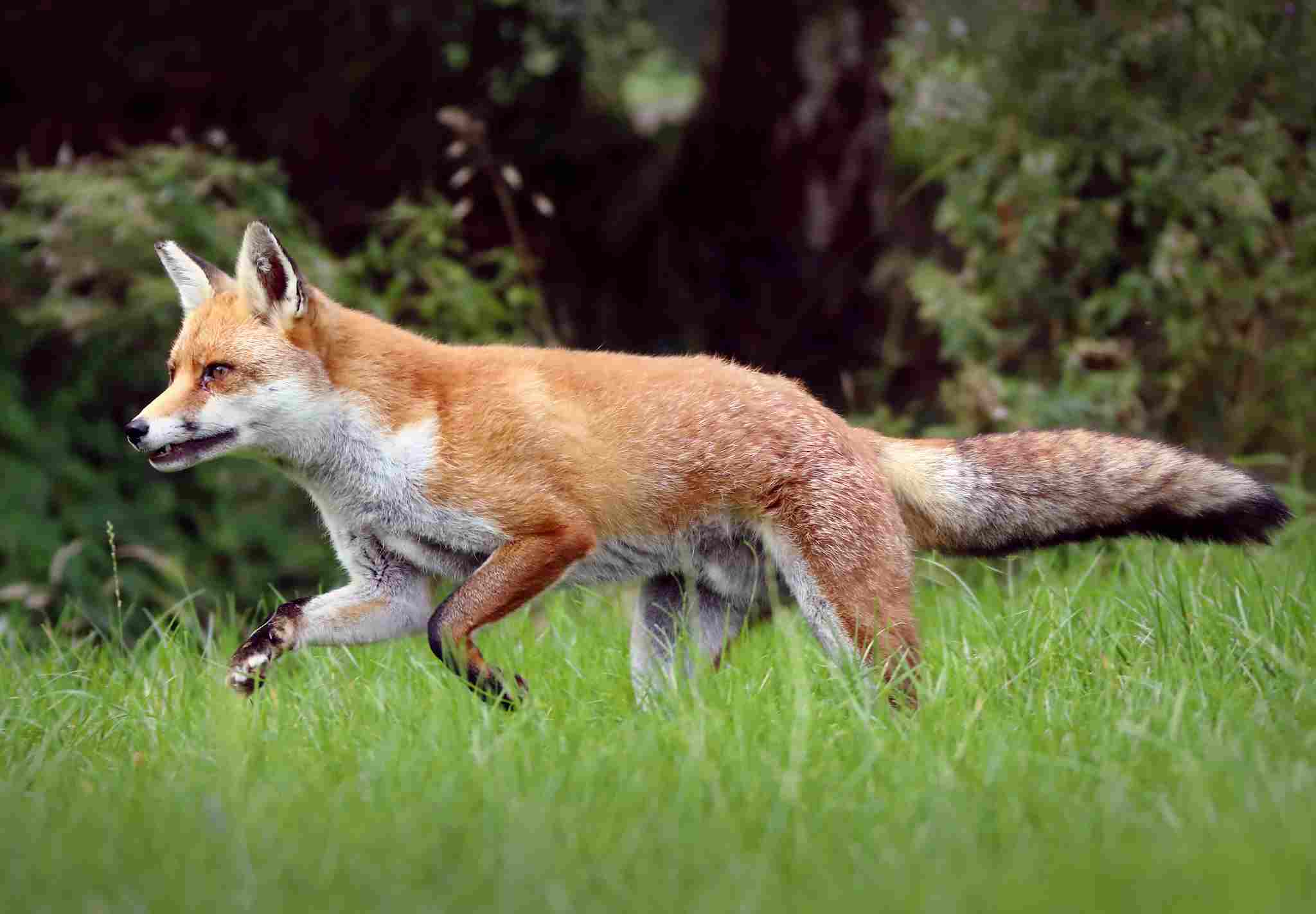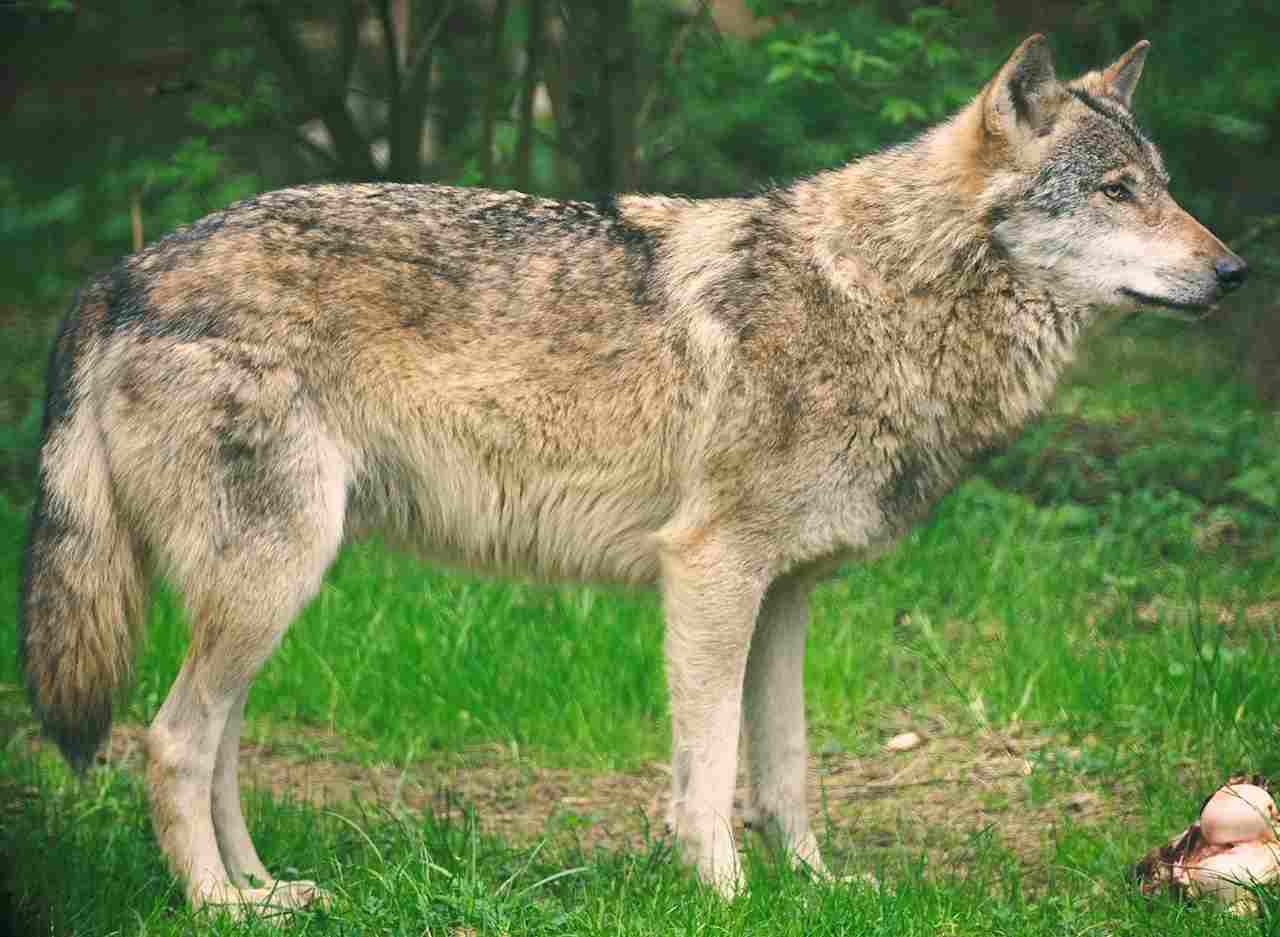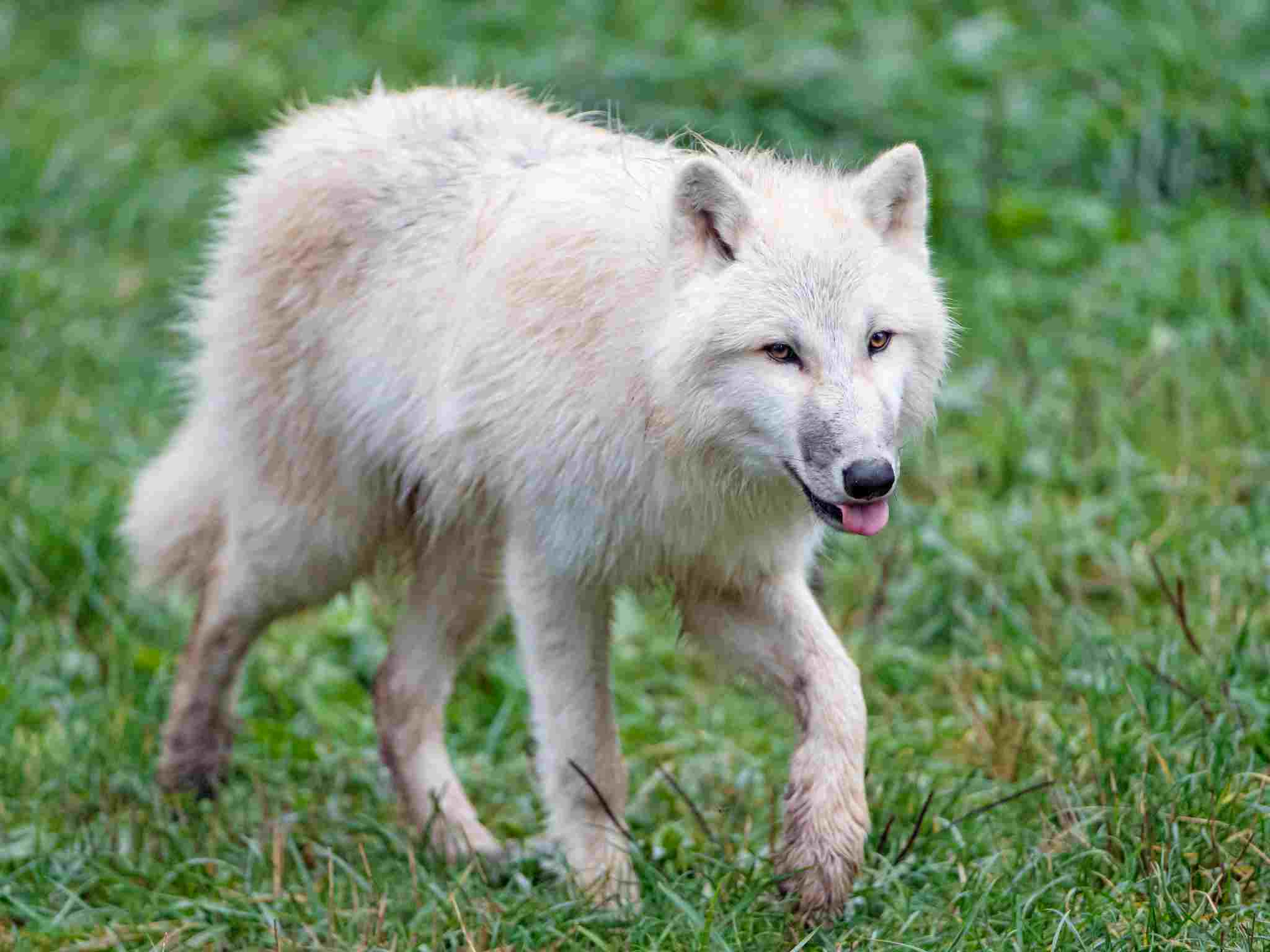Wolf Vs Fox Size, Weight, Ecological Comparison
Wolves are larger and stronger than foxes, making them more predatory. This size and strength advantage allows wolves to kill and even consume foxes.
In this article, we will discuss various factors that can be used to compare these animals, shedding light on their contrasting characteristics and behaviors.
Key Outcomes
*Biological Comparison
The wolf and the fox are both members of the Canidae family, but they belong to different genera and species. While they share biological similarities, there are also significant differences between the two animals.
*Size and Weight Comparison
The size and weight of wolves and foxes differ significantly. Wolves are much larger than foxes, with an average weight ranging from 70 to 120 pounds. In contrast, foxes are smaller, weighing between 6 to 31 pounds.
The size difference between the two animals is evident in their physical appearance, with wolves having a more robust and muscular build compared to the slender and agile foxes. This variation in size and weight also impacts their physical capabilities and hunting strategies.
*Physical Capability Comparison
Wolves are larger and more powerful than foxes. They have a bite force of 400 to over 1,000 pounds per square inch, which enables them to crush bones and tear through tough hides. This physical capability makes them formidable hunters and apex predators in their ecosystems.
On the other hand, foxes may be smaller in size, but they possess agility and cunning that compensates for their lack of strength. They are known for their quick reflexes and ability to navigate through various terrains with ease. Foxes have a bite force of around 300 pounds per square inch, which is sufficient for capturing and killing their prey, such as small mammals and birds.
1). Taxonomy
Both wolves and foxes belong to the same family, Canidae, which includes other canids such as dogs and coyotes. However, they belong to different genera and species.
Wolves are classified under the genus Canis and the species lupus. They are commonly known as gray wolves or timber wolves. On the other hand, foxes are classified under the genus Vulpes, which includes various species such as the red fox (Vulpes vulpes) and the Arctic fox (Vulpes lagopus).
Despite their taxonomic differences, wolves and foxes share certain physical characteristics. Both species have a similar body structure, with four legs, a long snout, and a bushy tail. However, wolves are generally larger and more robust compared to foxes.
2). Appearance
When comparing the appearance of wolves and foxes, one of the most noticeable differences is their coat or fur. Wolves typically have a thick, dense coat that helps them withstand harsh weather conditions, while foxes have a sleeker and less dense coat. This difference in fur texture is due to their respective habitats and the need for insulation.
Another aspect to consider is camouflage. Wolves have a coat that blends well with their natural surroundings, allowing them to remain hidden while hunting or protecting their territory. Foxes, on the other hand, have a coat that provides effective camouflage in their specific habitats, such as the red fox’s reddish-brown fur blending with forested areas.
In terms of stature and build, wolves are generally larger and more robust compared to foxes. Wolves have a more muscular build, with a broader chest and a powerful frame, which enables them to take down larger prey. Foxes, on the other hand, have a slender and agile build, allowing them to navigate through smaller spaces and hunt smaller prey.
3). Size
When comparing the size of wolves and foxes, there are distinct differences in their total body length and height at the shoulders. Wolves are generally larger than foxes in both these aspects.
Wolves typically have a total body length ranging from 4.5 to 6.5 feet, depending on the subspecies. Their height at the shoulders can reach up to 3 feet. On the other hand, foxes have a total body length ranging from 2.5 to 4 feet, with their height at the shoulders averaging around 1.5 feet.
The size difference between wolves and foxes is primarily due to their ecological roles and the prey they hunt. Wolves are apex predators and require a larger size to take down larger prey such as deer and elk. Their size also contributes to their ability to defend their territory and compete with other predators.
Foxes, on the other hand, are smaller predators that primarily hunt smaller prey such as rodents and rabbits. Their smaller size allows them to navigate through smaller spaces and adapt to various habitats.
Therefore, wolves are larger in size compared to foxes, with a total body length ranging from 4.5 to 6.5 feet and a height at the shoulders of up to 3 feet. Foxes, on the other hand, have a total body length ranging from 2.5 to 4 feet and an average height at the shoulders of around 1.5 feet.
4). Weight
When comparing the weight of wolves and foxes, there is a noticeable difference between the two species. Wolves are significantly heavier than foxes due to their larger size and ecological role as apex predators.
On average, wolves weigh between 70 to 120 pounds, depending on the subspecies. The weight of a wolf is necessary for taking down larger prey and maintaining their dominance within their territory. In contrast, foxes are much lighter, weighing between 6 to 31 pounds. Their smaller size and weight allow them to be more agile and adapt to various habitats.
The weight difference between wolves and foxes is crucial for their survival and hunting strategies. Wolves rely on their strength and weight to overpower and bring down larger prey, while foxes utilize their agility and speed to catch smaller prey.
Therefore, wolves are significantly heavier than foxes, with an average weight ranging from 70 to 120 pounds. Foxes, on the other hand, are much lighter, weighing between 6 to 31 pounds.

5). Bite Force
Bite force is a crucial factor in determining the predatory capabilities of animals. When comparing the bite force of wolves and foxes, there is a noticeable difference between the two species. Wolves possess a significantly stronger bite force compared to foxes, allowing them to take down larger prey and exert dominance within their ecosystem.
On average, the bite force of a wolf measures around 800 pounds per square inch (psi) (between 400 and 1,000+ psi), making it one of the strongest among land-dwelling carnivores. This immense bite force enables wolves to crush bones and tear through tough hides, ensuring their ability to access the nutrient-rich marrow and meat of their prey.
In contrast, foxes have a relatively weaker bite force compared to wolves. While the exact measurement varies among different fox species, their bite force typically ranges from 200 to 400 psi. This is sufficient for capturing and dispatching smaller prey, such as rodents and birds, but not as effective against larger or more formidable prey.
The difference in bite force between wolves and foxes reflects their distinct ecological roles and hunting strategies. Wolves rely on their powerful jaws to immobilize and subdue larger prey, while foxes utilize their agility and cunning to catch smaller prey. This divergence in bite force highlights the adaptations each species has developed to thrive in their respective environments.
6). Overall Physical Capacity
In terms of size and weight, wolves are significantly larger and heavier than foxes. Wolves can reach lengths of up to 6.6 feet and weigh between 70 to 150 pounds, depending on the subspecies. On the other hand, foxes are much smaller, with lengths ranging from 2.5 to 4 feet and weights between 6 to 31 pounds. This size and weight advantage gives wolves a greater physical presence and strength.
Additionally, as mentioned in the previous section, wolves have a much stronger bite force compared to foxes. With an average bite force of around 800 pounds per square inch (psi), wolves can exert dominance and take down larger prey. Foxes, with their relatively weaker bite force ranging from 200 to 400 psi, are better suited for capturing smaller prey.
In terms of physical adaptations, wolves have evolved to be highly efficient predators. They possess strong legs for running and chasing down prey, as well as sharp teeth and powerful jaws for tearing through flesh and bone. Foxes, on the other hand, are known for their agility and cunning, relying on their speed and intelligence to catch smaller prey.
In a violent confrontation between a wolf and a fox, the larger size, greater weight, and stronger bite force of the wolf would likely give it the advantage. However, it is important to note that such confrontations are rare in the wild, as these species tend to occupy different habitats and have different behaviors as well as ecological roles.
7). Habitat
The habitat of wolves and foxes varies significantly due to their different ecological roles and geographic ranges. Wolves are known to inhabit a wide range of ecosystems, including forests, tundra, grasslands, and mountains. They have a vast geographic range, with populations found in North America, Europe, Asia, and even parts of Africa. Wolves are highly adaptable and can thrive in various climates and terrains.
On the other hand, foxes are more adaptable to different habitats, including forests, grasslands, deserts, and even urban areas. They have a widespread distribution across the globe, with species found in North America, Europe, Asia, and Africa. Foxes are known for their ability to adapt to human-altered environments, making them successful in urban and suburban areas.
While both wolves and foxes can overlap in certain habitats, they generally occupy different ecological niches. Wolves are apex predators and often require large territories to hunt and maintain their populations. Foxes, on the other hand, are more opportunistic and can survive in smaller territories, utilizing a variety of food sources.
8). Lifespan
Wolves generally have a longer lifespan compared to foxes. On average, wolves can live up to 10-14 years in the wild, although some individuals have been known to live beyond 15 years. In captivity, where they are protected from natural predators and have access to regular food and veterinary care, wolves can live up to 20 years or more.
In contrast, foxes have a shorter lifespan. Most fox species have an average lifespan of 2-5 years in the wild. However, in captivity, where they are provided with a stable food source and protection from predators, foxes can live up to 10-12 years. Factors such as predation, disease, and competition for resources contribute to the relatively shorter lifespan of foxes in the wild.
It is important to note that lifespan can vary depending on various factors, including habitat quality, availability of food, and overall health of the individual. Additionally, different species of wolves and foxes may have slightly different lifespans. However, the general trend is that wolves tend to live longer than foxes.
9). Behavior
Wolves and foxes exhibit distinct behaviors that are shaped by their ecological roles and social structures.
In terms of feeding behavior, both wolves and foxes are carnivorous, but their hunting strategies differ. Wolves are highly skilled pack hunters, relying on cooperative hunting to take down large prey such as deer and elk. Their social structure allows them to coordinate and strategize during hunts, increasing their chances of success. On the other hand, foxes are solitary hunters, relying on their agility and stealth to catch smaller prey like rodents and rabbits.
Aggression is another aspect of behavior that differs between wolves and foxes. Wolves are known for their territorial behavior and can display aggression towards intruders or rival packs. They use vocalizations, body postures, and physical confrontations to establish dominance and defend their territory. Foxes, on the other hand, are less territorial and more adaptable. They are known for their cunning and ability to avoid conflicts by using their agility and quick thinking.
Social behavior also sets wolves and foxes apart. Wolves are highly social animals, living in tight-knit family units called packs. They exhibit complex social hierarchies and engage in cooperative behaviors such as hunting, raising offspring, and defending their territory. Foxes, on the other hand, are more solitary, with individuals typically living and hunting alone, although they may form small family groups during the breeding season.
When it comes to parenting, both wolves and foxes show dedicated care for their young. Wolves have a more elaborate parenting system, with both parents and other pack members participating in the care and upbringing of the pups. Foxes, on the other hand, have a more independent parenting style, with the mother taking primary responsibility for raising the kits.
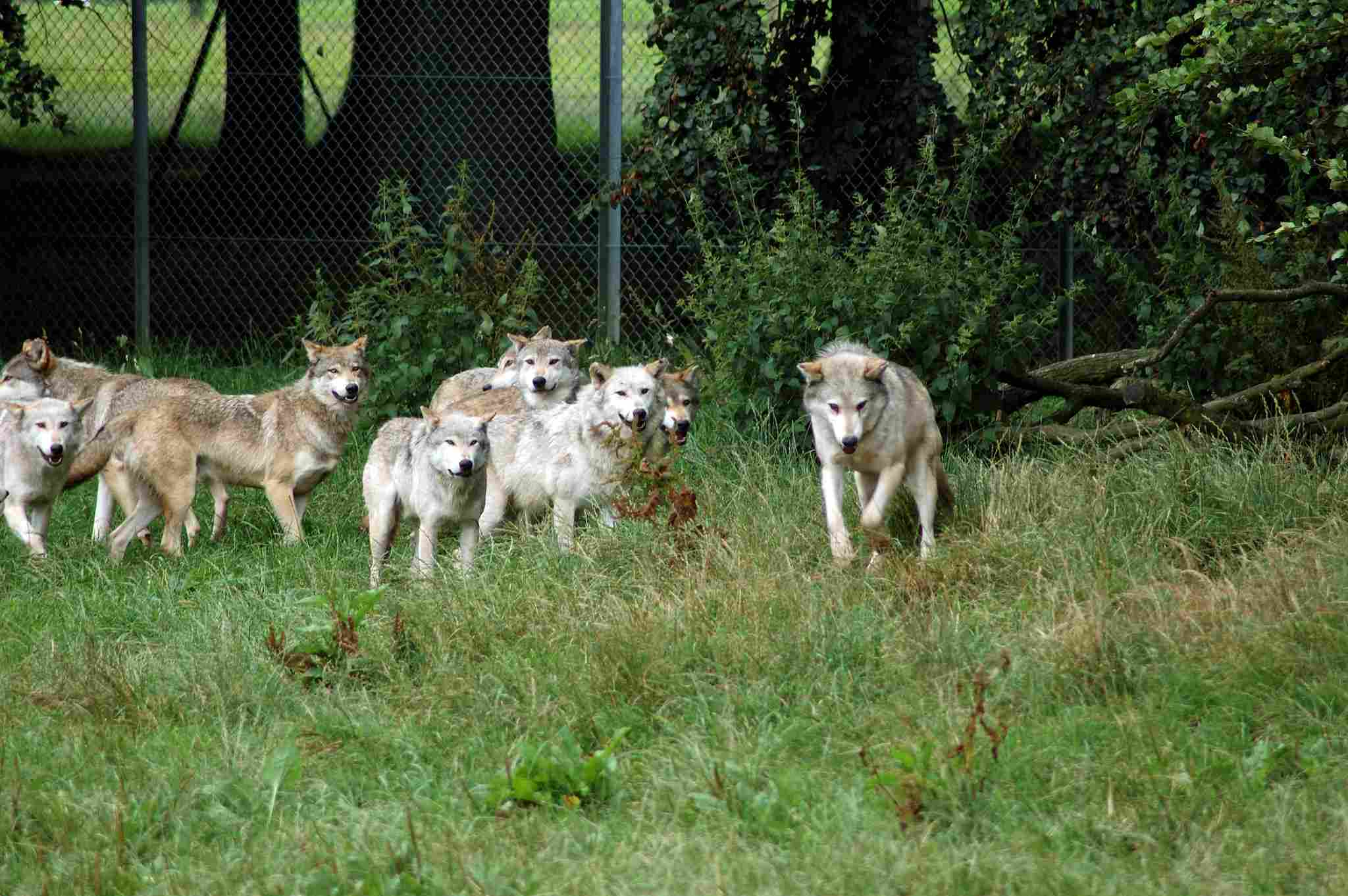
10). Reproduction
Wolves and foxes have distinct reproductive strategies that contribute to their survival and population dynamics. Both species are viviparous, meaning they give birth to live young. However, there are differences in their gestation periods and reproductive behaviors.
Wolves have a longer gestation period compared to foxes. The average gestation period for wolves is around 63 days, during which the female wolf will seek out a den to give birth and raise her pups. The den provides protection and a safe environment for the vulnerable newborns.
Foxes, on the other hand, have a shorter gestation period, typically lasting around 52 days. Like wolves, female foxes also seek out a den to give birth, but they may use pre-existing burrows or even hollow logs as their den. This allows them to adapt to different habitats and environments.
In terms of reproductive behavior, wolves and foxes differ as well. Wolves typically mate for life, forming strong pair bonds that last throughout their lives. They engage in elaborate courtship rituals and both parents participate in raising the pups. Foxes, on the other hand, are more promiscuous, with individuals mating with multiple partners during the breeding season. The male fox plays a minimal role in raising the kits, leaving most of the parental responsibilities to the female.
11). Danger Posed to Humans
In general, wolves are potentially more dangerous as predators, to humans; while foxes can cause the spread of diseases within human-inhabited areas.
Wolves and foxes have different levels of danger posed to humans, primarily due to their behavior and proximity to human settlements. While both species can come close to human habitats, wolves are generally more cautious and tend to avoid direct contact with humans.
They are known to be shy and elusive, preferring to stay away from populated areas. However, in rare cases where wolves have become habituated to human presence or have lost their fear of humans, there have been instances of attacks on humans. These incidents are extremely rare and usually occur when humans encroach upon wolf territories or provoke them.
On the other hand, foxes are more adaptable to urban environments and can be found in close proximity to human settlements. However, they are generally not aggressive towards humans and pose minimal danger.
Foxes are known to scavenge for food in residential areas, but they typically avoid direct confrontation with humans. In rare cases, if a fox feels threatened or cornered, it may display defensive behavior, such as growling or barking, but actual attacks on humans are extremely rare.
To ensure safety when encountering wolves or foxes, it is important to exercise caution and respect their space. Avoid approaching or feeding them, as this can lead to habituation and potential conflicts.
If you encounter a wolf or fox, it is best to observe from a distance and give them space to retreat. In the unlikely event of a close encounter, make yourself appear larger, make loud noises, and slowly back away without turning your back on the animal.
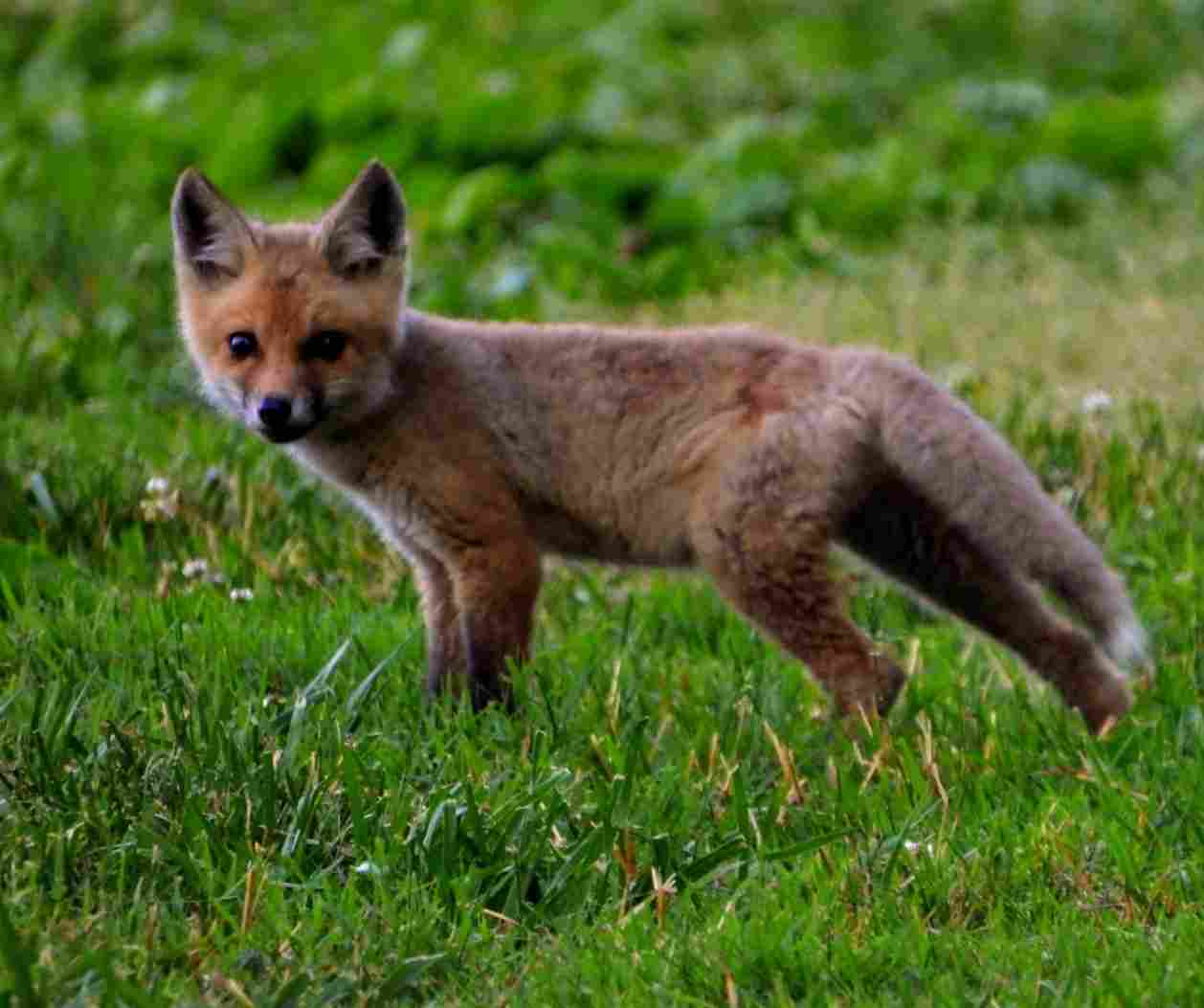
12). Conservation Status
Wolves, such as the gray wolf, have faced significant challenges to their survival. Habitat loss, human persecution, and hunting have been major factors contributing to their decline. As apex predators, wolves play a crucial role in maintaining ecosystem balance, but their populations have been greatly reduced in many regions. Conservation efforts for wolves focus on habitat protection, reintroduction programs, and managing human-wildlife conflicts.
Foxes, on the other hand, have a more diverse conservation status. Some species, like the Arctic fox, are considered vulnerable due to climate change and habitat loss. Other species, such as the red fox, have adapted well to human-altered landscapes and are not currently at risk. Conservation efforts for foxes involve monitoring populations, protecting key habitats, and raising awareness about the importance of coexistence.
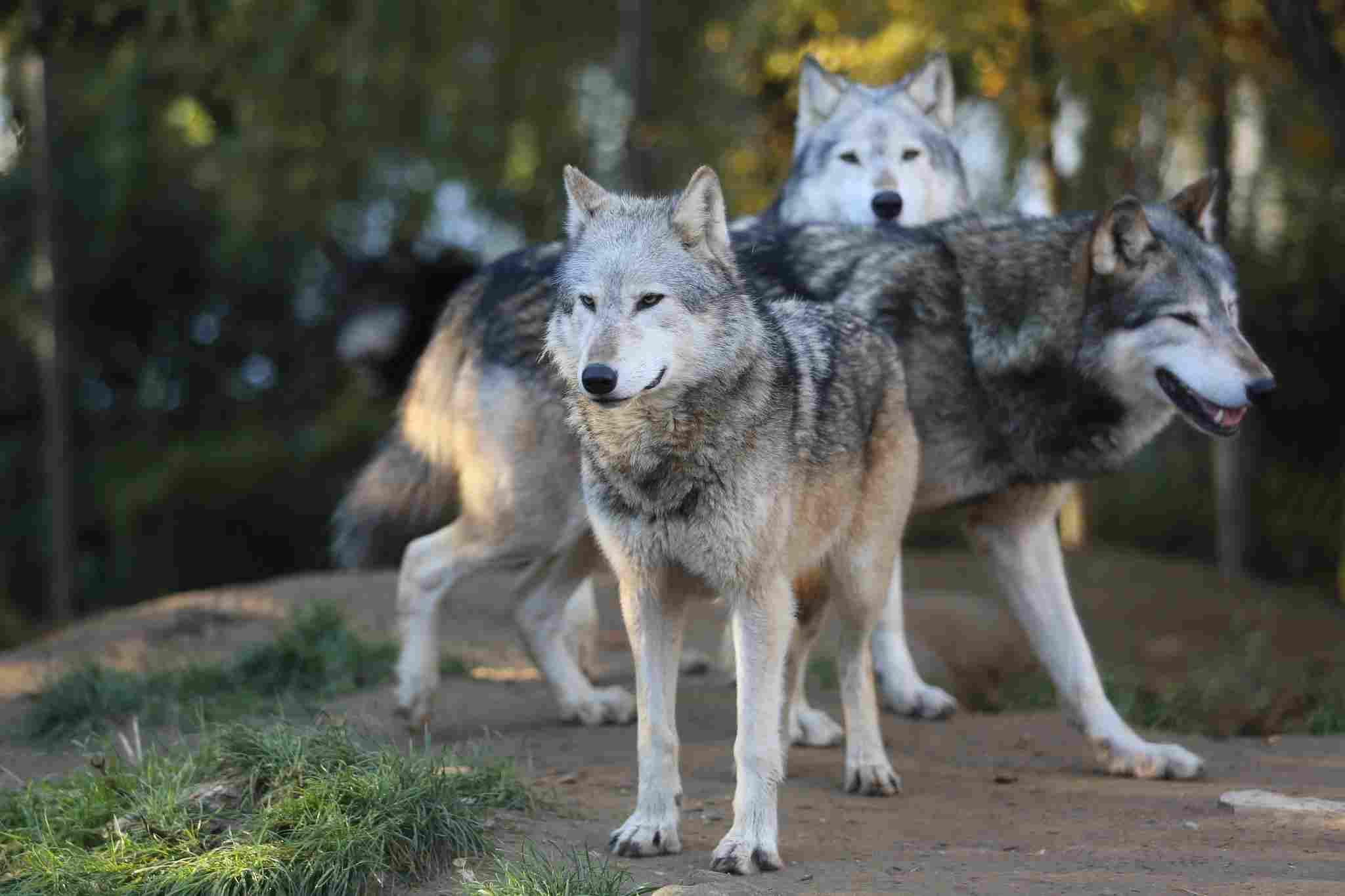
-Red Fox Vs Wolf Size, Weight, Taxonomy
a). Taxonomic Classification
The taxonomic classification of the red fox (Vulpes vulpes) and the wolf (Canis lupus) reveals their distinct biological differences. The red fox belongs to the genus Vulpes and the species vulpes, while the wolf belongs to the genus Canis and the species lupus.
b). Appearance
The appearance of the red fox and the wolf is distinct in terms of their coat, fur, and skin. The red fox has a beautiful coat that varies in color, ranging from red to brown, with a white underbelly.
This coloration helps them blend into their surroundings and provides effective camouflage. On the other hand, the wolf has a thick and dense fur coat that is usually gray or brown, allowing them to adapt to different environments. In terms of stature and build, the red fox is smaller and more slender compared to the larger and more robust wolf.
c). Size and Weight Comparison
When comparing the red fox and the wolf, it’s clear that there are significant differences in size and weight. The red fox is smaller and more lightweight, typically weighing between 6 to 15 pounds.
In contrast, the wolf is much larger and heavier, with an average weight ranging from 40 to 175 pounds. This substantial difference in size and weight is an important factor that contributes to variations in their physical capabilities and hunting strategies.
d). Physical Capability
When comparing the physical capabilities of the red fox and the wolf, it is clear that the wolf, being larger and heavier, has a significant advantage. Due to its size and weight, the wolf possesses greater strength and endurance, making it a formidable predator. In a confrontation between the two, the wolf would likely emerge as the victor.
Conclusion
I). SIMILARITIES
In comparing wolves and foxes, several similarities can be observed. Both animals belong to the Canidae family, which includes other species such as dogs and coyotes.
They share similar physical characteristics, such as a slender body shape, pointed ears, and a bushy tail. Additionally, both wolves and foxes are carnivorous predators, relying on hunting and scavenging for their food.
II). DIFFERENCES
Despite their similarities, there are also notable differences between wolves and foxes. One of the main differences lies in their size and weight. Wolves are significantly larger and heavier than foxes, with adult wolves weighing between 70 to 150 pounds, while foxes typically weigh between 6 to 31 pounds. This size difference also affects their physical capabilities, with wolves possessing greater strength and endurance compared to foxes.
Another difference between the two species is their habitat preference. Wolves are known to inhabit a wide range of ecosystems, including forests, tundras, and grasslands, while foxes are more adaptable and can be found in various habitats, including forests, deserts, and urban areas.
